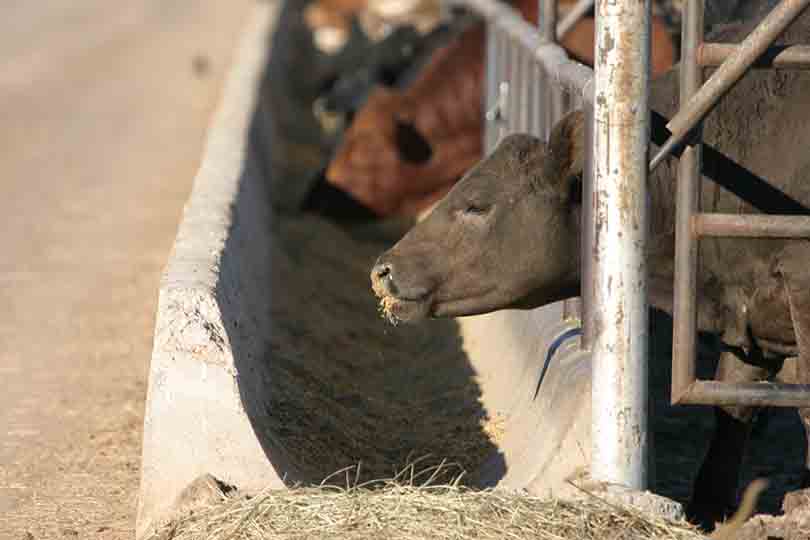Veterinary oversight, prescriptions and a documented veterinary-client-patient relationship highlight changes farmers and ranchers will soon experience when handling medicated feed for livestock or poultry.
Starting Jan. 1, 2017, all feed-grade or water-soluble medically important drugs for human health will be listed under the newly-expanded Veterinary Feed Directive (VFD).
Pharmaceutical companies also have voluntarily changed label indications for antibiotics.
Products that were approved to increase weight gain or performance will no longer be available for those purposes. Those same products can still be used, but only if prescribed by a veterinarian to treat or prevent infection.
The Veterinary Feed Directive Q&A
By F.T. McCollum III, PhD, PAS Texas A&M AgriLife Extension Service, Amarillo
What does the VFD rule do?
The VFD rule:
(1) ends the use of medically-important antimicrobials to enhance livestock performance;
(2) transitions many of the feed medications that are currently available “over-the-counter” into the VFD drug category;
(3) places the use of VFD antimicrobials in or on animal feed under the professional supervision of a licensed veterinarian;
(4) requires producers to obtain written VFD orders from a licensed veterinarian to purchase and utilize the VFD antimicrobials on or in feed.
When does the VFD rule become effective?
This rule became effective in October 2015 and must be fully implemented by Jan. 1, 2017.
What are VFD drugs?
VFD drugs are medically-important antimicrobials that are FDA-approved for use in animal feeds under veterinarian supervision and under written VFD orders. Currently (September 2015) there are three VFD drugs: florfenical (Nuflor, swine; Aquaflor, aquaculture); avilamycin (Kavault, swine); and tilmicosin (Pulmotil– swine, beef, dairy). Any new animal drug applications for feed delivery will automatically fall into the VFD category.
By Jan. 1, 2017, all medically-important antimicrobials intended for use in feed that are currently available “over-the-counter” will become VFD drugs. Additives such as lasalocid (Bovatec, cattle; Avatec, poultry), monensin (Rumensin, cattle; Coban, poultry), bacitracin, bambermycins (Flavomycin, swine; Gainpro, cattle), and amprolium are not “medically-important” and will not fall under the VFD unless they are used in combination with a VFD drug.
The label for the antimicrobial additive, or the label for the medicated feed item containing the antimicrobial, will state whether the antimicrobial is a VFD drug or not.
Do producers need written authorization from a licensed veterinarian?
Use of VFD drugs now falls under the supervision of licensed veterinarians. Producers must receive signed and written (not verbal) authorization from a licensed veterinarian to purchase and utilize VFD antimicrobials on and in feed. This authorization is referred to as a VFD order.
Is an established veterinarian-client-patient relationship (VCPR) required?
To write the VFD order, the licensed veterinarian must have an established veterinarian-client-patient relationship (VCPR) with the producer. Based on the Texas Veterinary Licensing Act, a valid VCPR is present if:
(1) The veterinarian assumes responsibility for medical judgments regarding the health of the livestock, and the client (the owner or caretaker of the livestock) agrees to follow the veterinarian’s instructions.
(2) The veterinarian possesses sufficient knowledge of the livestock to initiate a general or preliminary diagnosis of the medical condition of the livestock. Sufficient knowledge exists if the veterinarian has recently seen, or is personally acquainted with, the keeping and care of the livestock as a result of (a) examining the animal or (b) making medically appropriate and timely visits to the premises where the livestock are kept. A veterinarian-client-patient relationship may not be established solely by telephone or electronic means.
(3) The veterinarian is readily available to provide follow-up medical care in the event of an adverse reaction, or failure of the regimen of therapy.
What are the steps to obtain a VFD order?
(1) Contact your veterinarian with whom you have a valid VCPR. If a producer d

